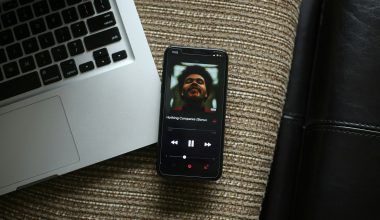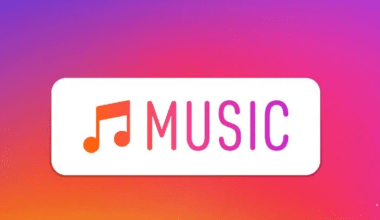What is Songwriting?
Have you ever wanted to compose a song but didn’t know where to start? You are not alone. Writing a song might seem tough at first, but it’s something anyone can learn. A song is like a story, and each part works together to create something beautiful. Learning how to compose a song is a mix of creativity and practice.
Don’t worry if you’re new to songwriting. This guide will break down the process into simple steps so that you can start composing music right away. Whether it’s a love song, a party track, or something deeply personal, you’ll find everything you need here.
Why Should You Learn How to Compose a Song?
Composing a song lets you share your feelings and ideas with the world. Music can bring people together, tell stories, and make moments unforgettable. Here are some great reasons to learn how to write your own songs:
- Express Yourself: Songs are a great way to share your thoughts and emotions.
- Connect with Others: Your song might inspire or comfort someone who hears it.
- Improve Your Skills: Songwriting helps you grow as a musician.
- Make an Impact: Your music can change how people feel and think.
When you write your own songs, you create something unique that only you can offer.
Start with an Idea or Feeling
Every song begins with an idea. Think about what you want your song to say. Do you want to write about love, happiness, sadness, or something fun? Here are some ways to find ideas:
- Think about your life experiences. What made you happy or sad recently?
- Imagine a story or situation, like a breakup or a celebration.
- Look around you. Nature, people, or even everyday things can spark ideas.
For example, if you feel happy, you might write a cheerful song. If you feel sad, your song could have a slower, emotional vibe.
Learn Basic Song Structure
To compose a song, you need to know how songs are built. Most songs follow a simple structure, such as:
- Verse: This is where you tell the story.
- Chorus: The most memorable part of the song. It’s repeated and usually catchy.
- Bridge: A different section to add variety and surprise the listener.
Here’s an example of a common song structure:
- Verse 1
- Chorus
- Verse 2
- Chorus
- Bridge
- Final Chorus
Knowing this helps you decide how your song will flow.
Write Simple Lyrics
Lyrics are the words in your song. Don’t worry if you’re not a poet—keep it simple! Here’s how to start:
- Choose a theme for your song. For example, love, heartbreak, or dreams.
- Write down phrases or words related to your theme.
- Arrange your words into lines and try to rhyme where it feels natural.
For instance:
- Theme: Love
- Words: Heart, forever, together, feeling, smile.
- Lyrics: “Your smile lights up my day, / Forever I hope you’ll stay.”
It’s okay to rewrite your lyrics a few times. The more you practice, the better your words will become.
Create a Catchy Melody
The melody is the tune of your song. It’s what people hum or sing along to. Follow these steps to create a melody:
- Hum random notes and see what sounds good.
- Use a musical instrument like a piano or guitar to experiment with tunes.
- Match your melody to your lyrics.
For example, try singing your lyrics with different tunes until you find one you like. Keep it simple and easy to remember.
Add Chords to Your Song
Chords give your song its mood. If you play an instrument, like the guitar or keyboard, start with basic chords. Here are some beginner-friendly combinations:
- Happy Mood: C – G – Am – F
- Sad Mood: Am – F – C – G
Play around with different combinations to see what fits your melody. You don’t need to know advanced theory—just experiment and have fun.
Build the Rhythm
The rhythm is what makes your song lively and fun. It’s the beat that people tap their feet to. To build rhythm:
- Decide if your song will be slow or fast.
- Use clapping, a drum machine, or even tapping your fingers to create a beat.
- Try singing your melody along with the rhythm to see if it works.
A simple rhythm can make a big difference in how your song feels.
Arrange Your Song Parts
Now that you have the melody, lyrics, chords, and rhythm, it’s time to put them together. Arrange your song into sections like this:
- Intro: A short start to grab attention.
- Verse: The storytelling part.
- Chorus: The main, catchy part of your song.
- Bridge: A unique section for variety.
- Outro: A smooth way to end the song.
Play or sing your song to see if everything flows nicely. Adjust the order if needed.
Add Instruments and Harmonies
Adding instruments can make your song sound full and professional. Start with:
- A guitar or piano for basic chords.
- Drums or beats for rhythm.
- A bassline to add depth.
You can also add harmonies—this is when different notes are sung or played together to make your song richer.
Record Your Song
Recording your song lets you hear how it sounds. Use your phone or computer to record. Here’s a simple way to do it:
- Record the melody and lyrics first.
- Add instruments one by one.
- Edit and mix your recording to make it sound polished.
Don’t worry about making it perfect. The goal is to capture your idea.
Practice your song until you feel confident performing it. Share it with friends, family, or on social media. Feedback can help you improve and boost your confidence.
Tips for Beginner Songwriters
- Start small: Write short, simple songs at first.
- Practice often: The more you write, the better you get.
- Don’t aim for perfection: Focus on expressing yourself.
- Listen to other songs: Analyze what makes them great.
Overcoming Challenges in Songwriting
Feeling stuck? Try these tips:
- Take a break and come back later.
- Collaborate with a friend to get fresh ideas.
- Change your environment—go for a walk or sit in a different room.
Tools for Songwriting
Here are some helpful tools:
- RhymeZone: For finding rhyming words.
- Chordify: To explore chord progressions.
- GarageBand or Audacity: For recording and editing your song.
Conclusion: Start Composing Today!
Composing a song is easier than you think when you break it down into steps. By following this guide, you can create music that’s meaningful and enjoyable. Remember, every great songwriter started as a beginner. With practice and dedication, you’ll soon be composing songs that make an impact.
So, grab your instrument, write down your thoughts, and start creating your masterpiece today. Learning how to compose a song is your first step toward sharing your unique voice with the world.
Related Articles:
For further reading, explore these related articles:
- Understanding the 1,000 Streams Rule on Spotify: What Artists Need to Know
- One-Month Free Trial for All Deliver My Tune Services
- Power of Collaborations in Music Industry
For additional resources on music marketing and distribution, visit Deliver My Tune.






